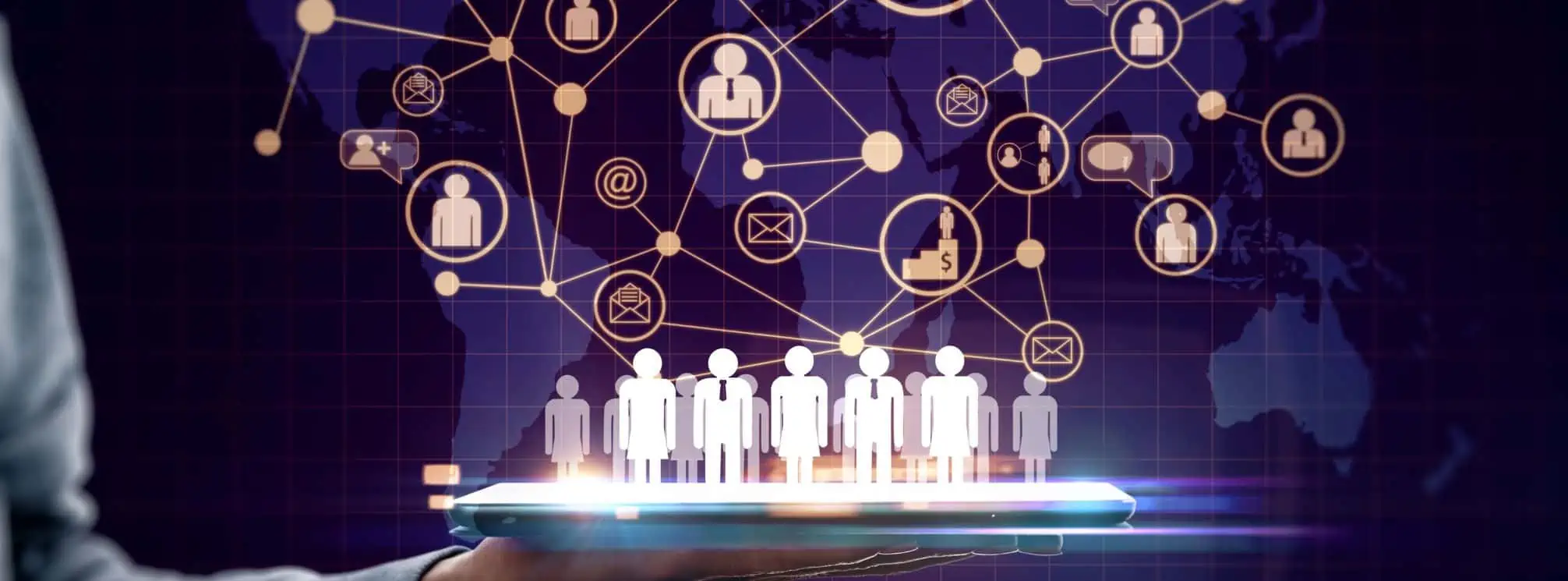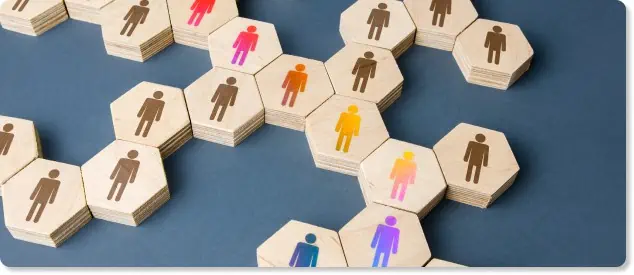Creating a HR Communication Plan for the Deskless Workforce
Many businesses already have a HR communication plan, but not all companies consider how to effectively communicate human resources information to their deskless workers. In this comprehensive guide, we’ll talk about what an HR comms plan is and how to create one that reaches all your employees.
What is a Communication Plan in HR?
A HR communication plan is a strategic approach to sharing information and updates with employees and stakeholders at a company.
These plans make sure employees receive important HR messages in a timely manner and on channels they have easy access to. And, ultimately, a communications plan for HR helps to ensure employees stay in compliance with legal and company policies as well as receive information that helps retain them at your company.

What are the Different Types of HR Communications?
To create an effective HR communication plan, we have to take a step back and look at the different types of HR communications. Like all internal comms, there are the following ways that people communicate within a company:
- Top-Down. Also called downward communication, top-down communication is when messages are shared from the top of the company (e.g. C-Suite or senior leaders) down through all the layers all the way down to the bottom (e.g. entry level or hourly employees). Often, the way a message goes from the top-down at distributed companies is that each level of management passes the message down face-to-face. The problem is that this “Cascade of Communication” can lead to miscommunication or important aspects of the message being lost. That’s why it’s important to have good channels that reach everyone.
- Bottom-Up. The opposite of downward communication is bottom-up communication (or upward communication). This is where employees are given a voice and permitted to share their feedback, ideas, and questions with those in positions above them (and not just their direct manager).
- Middle-Out. Middle-out communication is all about empowering our people managers to be better communicators. It’s where we give them trust and authority to share key messages that impact their teams. This is a great way to improve localized communication and increase engagement because the messages are so timely and targeted to the recipients.
HR Communication Types Example
When applied to HR, these different ways of communicating help us create better strategic plans. Why? Because you need all types of communication to create an effective strategy.
- The high-level, visionary plans come from the top-down. For example, the company decides to introduce longer parental leave plans because they want to retain their talent. So, this message gets communicated from the top.
- Managers help to reinforce the message. They remind their teams about new policies, how they impact them, and how to take advantage of these benefits. Great managers will help encourage employees to use a benefit.
- Employees then communicate their feedback up the chain. Hopefully, this feedback is good! But if it’s constructive criticism, don’t brush it off. Listen. Say, your new parental leave plan was only for new mothers. You might receive employee feedback that it should also include new fathers. This gives you an opportunity to make an adjustment to your policies.
What Should HR Communicate to Employees?
There are numerous topics that HR should communicate to their employees. This includes:
- Benefits information (including employee open enrollment)
- Compensation
- Company holidays
- Employee discounts and perks
- Performance evaluation process
- Hiring and onboarding processes
- Compliance training
- Company policies (e.g. employee handbook)
- Workplace culture
- Diversity, equity, and inclusion initiatives
[optin-monster slug=”chycyx3pb2kqmn6yctwk” followrules=”true”]
6 Steps for Creating a HR Communication Plan for Deskless Workers
Given that there is a lot to communicate to employees from an HR perspective and there are many ways to get those messages across, how do we actually create an effective HR communications plan? And, how do we ensure we reach our distributed and deskless workers and not just our computer-bound employees?
Follow these steps:
- Start with clear goals. If you want to improve getting HR messages to your deskless workforce, you have to define SMART goals. How long will it take you to achieve this? What tactics or technology will you use to make it happen?
- Find a leadership sponsor. Whether it’s your chief human resources officer or chief communications officer, finding an executive sponsor is key to creating a successful plan.
- Start regularly collecting employee feedback. It’s likely the HR team is already conducting an annual employee engagement survey. Use that survey to collect feedback on employee communications and HR initiatives. And better yet, expand your surveying practice to include more regular pulse surveys too.
- Audit communication channels. To improve how well we can reach our teams, we have to have a firm understanding of how we are able to communicate with them. Conduct an internal communications audit to learn where you might have gaps and what messages are currently getting through.
- Tap into your managers. Involving your frontline managers in your HR communication plan is a great way to activate your frontline workers and get them to engage with your communications and take the desired action.
- Set a cadence. Internal communications experts know that you can’t just send one message and expect results. You have to create campaigns and a long-term internal communication strategy to see real change.
Why is it Important to Have a HR Communication Plan?
This might seem like a lot of work (it is), so why is it worth the effort? Ultimately, HR is responsible for many programs, initiatives, and ways of working. These messages are absolutely essential to your business operating the way you want it to and for fostering your desired culture and work environment.
Creating a HR communication plan is a critical step in making sure you get those messages across effectively. When you create a communication plan for HR, you’re more likely to:
- Improve workplace culture and employee engagement
- Boost employee productivity
- Save time (and therefore money)
- Increase participation in employee benefits
- Improve worker health and wellbeing
- Create a more psychologically safe workplace environment
- Increase employee net promoter scores (eNPS)
- Streamline and improve the employee onboarding experience
[optin-monster slug=”wyjpzx5xm7rzbnz6qong” followrules=”true”]
Top Tools to Help You Execute Your HR Comms Plan
Selecting the right HR communications tools to executive on your communications plan can make a big difference. Here are a few types you might want to consider:
- Communication channels. In addition to your HRIS, you want to make sure your company has the right comms channels in place to get your messages to all your employee segments.
- Organization and productivity tools. We love a good editorial calendar to keep track of all our communications campaigns. While it’s likely that your internal communications team already is managing a content calendar, it can be beneficial for the HR team to also keep a calendar of key HR initiatives and events. This will make your meetings with the internal comms team more efficient.
- Measurement tools. How will you know if your communications plan is working if you can’t measure your success? Select channels and systems that have native analytics to help you track your progress.
[optin-monster slug=”ucyxtz2fxemh6aryl4gg” followrules=”true”]


